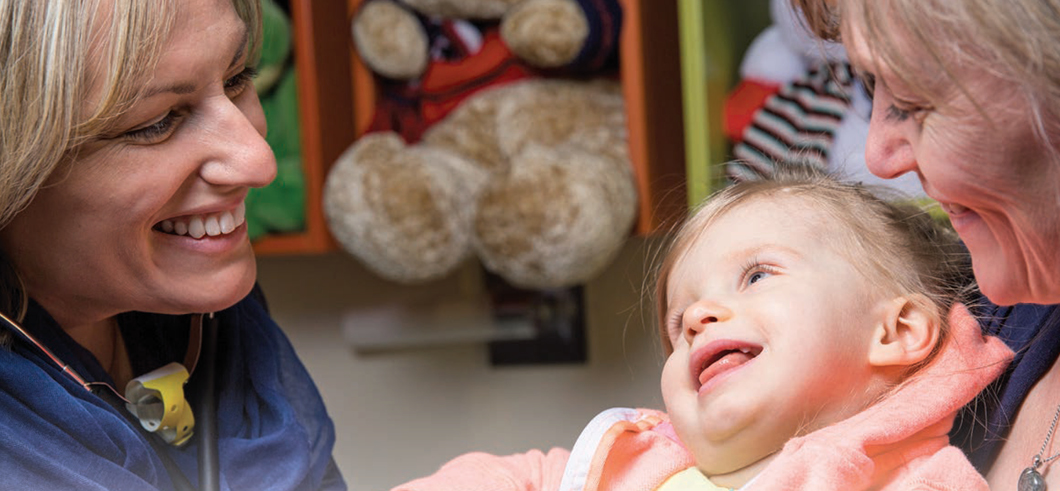RN Marion Rattray is the manager of Roger’s House and the palliative care team at CHEO. While some people may shy away from work that means watching young people die, Rattray has spent the bulk of her 45-year career caring for children. She says she is compelled to ensure all their physical and emotional needs are met because palliative care is not just about dying; it’s about helping the children lead full and complete lives.
“When your child is dying, it’s one of the most stressful things you can cope with,” she says. “There’s such a need for kind, compassionate care and knowledge and skills in this area.”
There are only six hospices for children in Canada, so the nurses are part of a relatively small group of paediatric palliative health professionals in Canada. The centre is named for Roger Neilson, a former assistant coach with the Ottawa Senators hockey club who died of cancer in 2003. He had worked with children throughout his life and before his death, Rattray says the Senators’ foundation approached CHEO looking to create a paediatric hospice in Neil-son’s honour. Roger’s House opened in 2006 and has served more than 280 families since. The NHL team’s foundation continues to partly fund the hospice and Senator’s right-winger Chris Neil and wife Caitlin fundraise for the facility and visit the children.

When children are staying at Roger’s House, they follow their daily routines as much as possible. Lynn Grandmaison Dumond, an advanced practice nurse in palliative care at CHEO and Roger’s House, says if a child staying for respite can still attend school, they do so. They also interact with volunteers and an inter-professional team including child life specialists, recreation specialists, social workers, physicians, nurses and PSWs to name a few. Other professionals, such as respiratory therapists and pharmacists, are available through the CHEO Palliative Care team. Once they’re in the house, they have access to one of the six rooms and two family suites that come with all the comforts of home, including handmade quilts on the bed, TVs and private bathrooms. There are also amenities a hospital can’t offer, like the Snoezelen Room, a recreational area complete with a ball pit, light displays and a sheepskin hammock for snuggling. Grandmaison Dumond, a former neonatal intensive care nurse, says such comprehensive care embodies what she believes is a model of palliative care. By meeting children and families early on in their diagnoses, Grandmaison Dumond says the team can individualize the care to the families’ needs.
“In my clinical life as an ICU nurse, there were times when being treated for an illness was painful and drawn out and sometimes it doesn’t change the outcome,” she says. “When we’re offer-ing palliative care, our goal is to make every day count and to enhance the lifestyle of a child and the experience of a family at the end of life.”
Offering one-on-one care to families also attracted RPN Jackie Davis to Roger’s House. She started working there as a personal support worker in 2009 and when she finished her RPN two years later, she wanted to stay. Davis loves her work because of the autonomy and leadership RPNs have. “We are encouraged to work to our full scope of practice at Roger’s House,” she says.
Both Sloan and Davis are part of a task force aimed at enhancing PSWs’ skills and abilities to care for children and families. They are teaching about taking vital signs and how to give G-tube feeds and perform mouth care. “You get to have a say in everything that happens here and really feel like you’re making a difference in the lives of our families,” she says.
Davis also enjoys the challenge of working with children who suffer from so many diverse conditions. Some are so rare, they don’t even have names. But many of their symptoms, including seizures, respiratory disorders or global developmental delay, are similar. Her day might include G-tube feeds, giving baths, administering medications, providing acute end-of-life care and providing support to families along the trajectory of their children’s illnesses. Staff meet each afternoon and Davis says her colleagues are always eager to share information with each other. For example, she can accompany a respiratory therapist into a patient’s room while a new ventilator is being installed so she can learn how to use it right away. And if physicians need to be called to consult on a patient, Davis says they always take the time to listen to the nurses’ assessments. Davis says the team needs to be strong because they rely on each other when a patient dies. Roger’s House staff attend scheduled debriefs to talk about the experience of losing patients they’ve known for years. But Sloan also finds solace in her teammates in another way. She knows she’s offered the children every resource her colleagues can offer and that brings her peace of mind when a patient dies. “It helps us to know we did everything we could,” she says.
“You were able to provide comfort and relief. You were able to do something really special for that family.”


